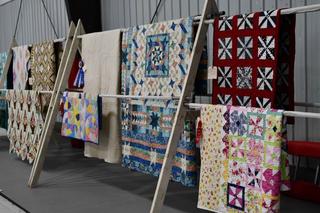Crafting a Legacy
Rural Artisans Keep Traditions Alive


Whether it’s repurposing old materials into practical farm tools or adapting a soap recipe to match the season’s harvest, creativity in rural craftsmanship thrives on ingenuity and resourcefulness. These small but meaningful acts of innovation highlight how limitations can inspire new possibilities. This creative spirit defines rural craftsmanship — not just as a way to produce functional or beautiful items, but as a profound expression of community identity.
A Legacy in Every Swirl of Clay
Rural crafts like woodworking, pottery and quilting were born out of necessity. Handmade furniture, clay pots and warm quilts were essential for everyday life. Over time, these practical tasks became forms of self-expression.
Rural Artisans Preserving Tradition
For generations, these skills were passed down as invaluable knowledge. These crafts also supplemented incomes, with handmade wares sold at markets or traded within tight-knit circles. Many rural artisans across the U.S. still preserve these traditions — meet John and Anni Furniss from Washington.

John Furniss, the Blind Woodworker
As someone who has been completely blind since the age of 16, John told AcreageLife that he found woodworking to be a profoundly tactile and hands-on way to connect with his art. Now a rural craftsman, he envisions his creations entirely in his mind before shaping them on his lathe. For him, the craft is both therapeutic and a way of sharing his internal world with others.
"Through woodworking, I can share what I 'see' with others," John said.
Not one to shy away from integrating modern tools, John relies on innovations like a smartphone app that reads product labels aloud and a table saw with built-in safety advancements. Yet, his craftsmanship remains rooted in tradition — every piece imbued with care and a sense of timelessness.
Anni Furniss, the Resilient Mixed Media Artist
With over 30 years of experience across clay sculpture, painting, felting and light woodworking, Anni finds her art both nourishing and therapeutic. Living with physical challenges that affect her strength and dexterity, she treasures the act of creation.
“The ability to create with my hands feels like an extraordinary gift," she said.
She achieves remarkable precision using tools like mini Dremels and innovations in materials. Yet, for her, the heart of creativity remains in her hands — where the soul of rural craftsmanship breathes.
“Rural artists thrive because of the support they receive, especially from their local communities. We’re fortunate to live in a small town that values public art and actively supports artists. Our town’s event organizers work tirelessly to create opportunities for people to gather and for artists to showcase their work — whether through sales or display. One of my favorite examples of community support is seeing small businesses display local art on their walls,” Anni said.

The Crafts That Built and Defined Rural Life
Rural craftsmanship spans various activities, from the fiery artistry of blacksmithing to the soothing creativity of making soaps and candles. These crafts embody tradition and innovation, including do-it-yourself (DIY) natural cosmetics, easy soap recipes, pottery and quilting.
Each practice brings its creativity and charm, showcasing the ingenuity of rural life and its ability to adapt and thrive in modern times.
- Blacksmithing is a craft as old as civilization, where the simple elements of fire and iron are transformed into tools and art.
- Mastering the art of soap and candle making is both a practical skill and a rewarding hobby.
- DIY natural cosmetics allows you to choose what goes on your skin and can be less expensive than high-end organic products.
- Pottery and quilting have been passed down from generations and both require a traditional method of apprenticeship.
The Brilliant Impact of Rural Crafts
Rural craftsmanship fosters a strong sense of identity and belonging. It weaves communities together and strengthens local economies.
For artisans, new platforms like social media and e-commerce allow them to share their craft with broader audiences. Handmade items, offered to customers craving authenticity and meaning, are carving a bright future for these traditions.
It is essential to keep these traditions alive for younger generations. Artisans like John and Anni show how blending tradition with innovation leads to remarkable creations. Rural craftsmanship is more than art; it’s history, culture and heart.
Tags:Features

Acreage Life is part of the Catalyst Communications Network publication family.
















